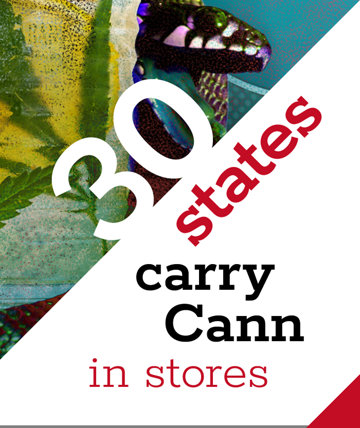“Immediately, the sales took off,” Halper recalls. “We’ve never seen anything explosive like this.” Just two years in, THC beverages now make up 15 percent of his total sales. “It’s hard to believe this growth isn’t going to be astronomical,” he exults.
The meteoric rise of cannabis-infused beverages marks a paradigm shift in the American approach to leisure, sobriety and “wellness.” Once relegated to back-alley brownies or treats from glassy-eyed dispensaries, THC has quietly slipped into a new form: artisanal tonics and microdosed mocktails, promising euphoria without hangovers and social ease without the booze.
Near-daily cannabis use has surged 15-fold since 1992.
As CNN Business put it in a May 2025 article with the blunt headline, “Alcohol Use Is Declining. THC Is Swooping In”: “The time is right for a THC beverage boom.”
That prediction appears to be coming true.
A key driver is the “California sober” lifestyle—part of the broader “sober curious” (SC) movement—where individuals reduce or eliminate alcohol while exploring cannabis as an alternative. For many, it’s a lifestyle pivot guided less by prohibition than by optimization—a desire to “feel better,” not worse, after socializing.
The numbers tell a sobering story. A 2020 study published in JAMA Pediatrics showed a steady rise in college students abstaining from alcohol, jumping from 20 percent in 2002 to 28 percent in 2018. And in May 2024, the journal Addiction reported that daily cannabis use has, for the first time, surpassed daily alcohol consumption in the US.
As of early 2025, as many as 39 states and three territories had legalized medical marijuana, with 24 of those also permitting adult recreational use. Unsurprisingly, states that permit legal recreational use consistently have the highest cannabis consumption rates, according to the National Survey on Drug Use and Health.
While overall alcohol use still exceeds cannabis, frequent drinking among young people has declined. Meanwhile, near-daily cannabis use has surged 15-fold since 1992.
Among the top-selling brands riding this wave is Cann, a Los Angeles-based startup that launched in 2019. Marketed as a cannabis-infused “social tonic,” Cann offers fizzy, alcohol-free cocktails that claim to deliver a buzz as gentle as it is stylish. As of late 2023, the company said it had sold over 10 million drinks across seven states and Canada.

“We can’t drink alcohol like we did in our twenties,” Forbes magazine quoted Jake Bullock, Cann’s co-founding CEO and a first-mover in the THC-infused beverages market, as saying in a January 2023 article. “Our hangovers are worse. We wanted to create a savory adult drink that offered euphoria without alcohol.”
That message, apparently, resonates with younger consumers. A 2024 study backed by the National Institute on Alcohol Abuse and Alcoholism found that 9 percent of young adults in their mid-20s were aware of the sober curious movement, and 7 percent had tried alternative alcohol-free activities in the past year. Temporary abstinence trends like “Dry January” and “Sober October” have become mainstream, bolstered by social media and a booming wellness economy.
Another survey by The Educated Patient, a healthcare branding firm, found that 65 percent of Gen Zers plan to drink less in 2025, with nearly 40 percent committing to a completely dry lifestyle.
It is such developments that have given THC beverages a cultural legitimacy and commercial viability the cannabis industry could only dream of a decade ago.
But threading the regulatory needle hasn’t been easy. Although dozens of states have legalized cannabis, it remains a Schedule I controlled substance under federal law—preventing businesses from claiming standard tax deductions for basic expenses like rent or payroll, and making it difficult or impossible for them to access traditional banking services, thereby forcing many to operate in cash. Further, although the 2018 Farm Bill created a loophole by legalizing hemp with less than 0.3 percent THC, it was a later legal interpretation—cemented by a 2022 Minnesota law—that clarified just how far companies could go in using hemp to produce and sell intoxicating THC beverages nationwide.
Flavors like blood orange cardamom and yuzu elderflower now sit beside six-packs of IPA in trendy fridges.
That clarification opened the floodgates for companies to sell hemp-derived THC beverages across much of the country, sidestepping stricter cannabis regulations that had been in place for several years. For example, Cann was only available at a handful of cannabis dispensaries initially, because it derived its THC and a non-psychoactive component of the cannabis plant known as cannabidiol (CBD) from marijuana.
“We were like, ‘Well, wait, can we extract THC and CBD from hemp?’” Bullock recounted. And just like that, a market was born—technically legal, lightly regulated and wildly lucrative.
Today, Cann is available in stores across 30 states and ships direct to customers in at least 35. In 2024, the company’s revenues soared by 70 percent. This year, it projects growth of more than 100 percent.
Flavors like blood orange cardamom and yuzu elderflower now sit beside six-packs of IPA in trendy fridges. Cann’s offerings max out at 10 milligrams of THC per can.
“If you think about alcohol and caffeine, we drink these in microdoses,” Bullock noted. “We wanted to capture that same kind of concept.”
The brand’s messaging, drenched in aspirational leisure, reads like the Instagram caption of your coolest, most mellow friend: “We’re talking river float and the sun is out and there’s no cell reception. We’re talking just arrived at the Airbnb and it has a sauna—with a TV inside. TLDR: For the perfect night out and a clear morning after.”
But not everyone is floating. A 2024 study from McMaster University in Canada published in Cannabis, a journal of the Research Society on Marijuana, highlighted serious concerns: Inaccurate cannabinoid labeling, unpredictable effects on users and insufficient research on long-term health consequences, “further exacerbated by the sheer diversity of formulations” among cannabis beverages.
Staci Gruber, director of Harvard’s MIND Program at McLean Hospital, echoed that caution. Because cannabinoids in drinks are specially formulated for rapid absorption, even small doses can cause users to “feel uneasy or anxious and their heart rate and blood pressure may rise,” Gruber warned in a 2024 Harvard Medical School brief. “Nausea and vomiting are also possible,” she added, “and some people even become paranoid and agitated.”
States are beginning to respond. In May, legislatures in Texas, Tennessee and Alabama passed laws restricting or banning certain hemp-derived products. A new Tennessee law will outlaw products with synthetic cannabinoids and restrict online hemp sales. Alabama followed suit, banning smokable hemp and tightening edible regulations.
Texas lawmakers went further. Senate Bill 3, passed in late May, seeks to outlaw any hemp product containing THC or its derivatives—excluding nonintoxicating compounds like CBD and CBG (cannabigerol, a non-psychoactive cannabinoid found in cannabis).
“We’re not banning hemp,” said Texas Rep. Tom Oliverson. “We’re banning high.”
That remark, both succinct and strategic, may help define how lawmakers—and the public—understand the issue. With Texas moving to restrict THC-infused beverages, other states may soon face similar questions: Should these products be embraced as part of a growing cannabis market, or more tightly controlled as a potential health risk?
For now, the answer appears to be both. While THC drinks are sold as a wellness trend and party perk, lawmakers and health officials increasingly—and rightly—view them as a health hazard and public risk.
The pitch is the classic huckster’s promise: Feel like yourself—only better. But especially for younger consumers, these drinks can blur the line between casual use and chemical dependence. With experts sounding the alarm and regulators lagging behind, the menace lies in the industry’s calculated strategy: wrapping a psychoactive drug in the language of fun, flavor and “self-improvement”—while the public picks up the tab for the fallout.






















